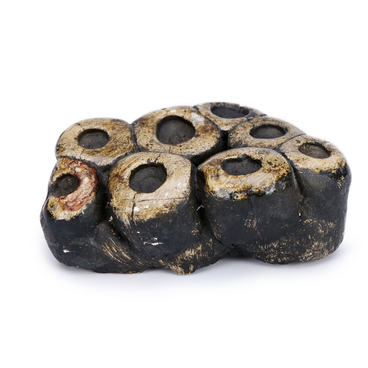The museum exhibit is a fossilized imprint of a metasequoia, a coniferous tree from the Cupressaceae family. This deciduous conifer has survived to this day, although it is an endangered species. Metasequoias typically grow up to 35 meters tall with a trunk diameter of up to 2 meters. However, in the US state of Pennsylvania, the tree, planted in 1948, reached a height of 41.15 meters by 2018. One Chinese metasequoia is known to have grown to 50 meters, but it was destroyed by lightning in 1951.
The conical crown of young trees becomes rounded with age, while the reddish-brown bark eventually takes on a darker shade and starts to crack. The two-row linear leaves of these trees fall off in winter, sometimes the same happens to the shoots. Spherical, sometimes egg-shaped cones reach two centimeters in diameter; they can appear as early as in the sixth year of the plant’s life. By the age of 20 years, the tree reaches 20 meters in height. Scientists have found out that the life expectancy of a metasequoia is about 600 years.
Fossilized leaf imprints of this tree have also been found in Kamchatka. During the existence of the Kamchatka Peninsula, the climate there has repeatedly changed both towards warming and cooling. The subtropical climate in Kamchatka lasted for more than one million years. The flourishing of subtropical flora happened in the Eocene (44.5–60 million years ago).
At the end of the Early and beginning of the Middle Eocene, a climatic optimum occurred, causing a rapid spread of subtropical and thermophilic broad-leaved flora. Leaf and pollen imprints of various coniferous trees, including metasequoia, have been found on the territory of West Kamchatka, indicating their widespread presence in the Miocene.
Due to climate change and
its more distinct seasonality, a gradual degradation of metasequoia began.
These plants mostly became extinct during the anthropogenic period, which began
2.58 million years ago. The relict species that has survived to this day has
been named Metasequoia glyptostroboides. From the Late Cretaceous to the
Pliocene, it was a major forest species in the areas of the Northern
Hemisphere, including North America, most of Siberia, Eastern Europe, the
Caucasus and Greenland.



